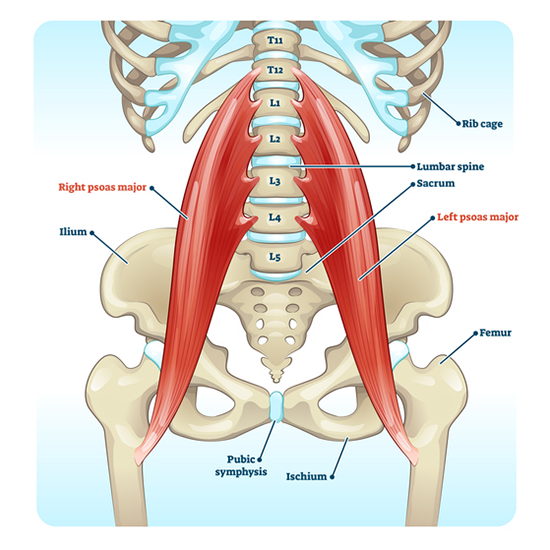6 Psoas Muscle Stretches You Need in Your Life
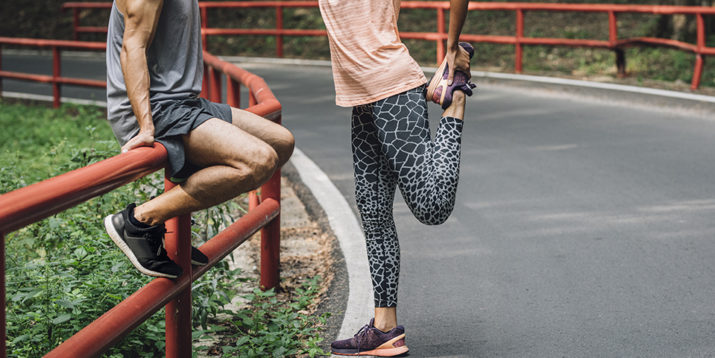
What’s your favorite psoas muscle stretch? If you’re not sure what the psoas muscle is, never mind how to stretch it, don’t feel bad.
The psoas muscle tends to fly under the radar. It’s not visibly recognizable, like the rectus abdominis or quadriceps.
It’s not a muscle you flex on command, like the biceps. It’s rarely called by its name, as it tends to get lumped in with the “hip flexors.”
But, despite its seemingly low profile, the psoas muscle is a huge player in your everyday activity. And when it’s not working properly, it will make itself known.
That’s why it’s worth your time to get to know the psoas muscle and a handful of effective stretches.
What Is the Psoas Muscle — and Why Does It Matter?
The psoas muscle, or psoas major muscle, originates at the lower part of the spine and inserts at the top of the femur, or thigh bone.
“The function of the psoas major is to flex the hip joint by lifting the femur up toward the trunk as you would while walking or lifting your knee toward your chest,” explains Todd Buckingham, Ph.D., an exercise physiologist at Mary Free Bed Sports Rehabilitation Performance Lab in Wyoming, Mich.
“Additionally, it flexes the hip joint by flexing the trunk on the femur, as if you were performing a sit-up while lying on your back,” he explains.
The psoas also assists in lateral (sideways) flexion of the torso and rotation of the hip joint.
Both overuse and prolonged sitting can cause the psoas muscle to shorten, which can lead to a “tight” sensation and a host of other issues.
“When this muscle is constantly in a shortened position, the opposing muscle groups — the glutes — are lengthened and can become weak,” says Cody Braun, CPT, Manager of Technical Fitness for Beachbody.
“This imbalance creates poor joint positioning that can wreak havoc up and down the kinetic chain. A tight psoas can lead to an anterior pelvic tilt which has been shown to play a role in low back pain,” Braun adds.
You may also experience pain and nerve irritation in the groin and a radiating sensation down the front of the leg, says Buckingham.
“Psoas tightness can cause difficulty walking and maintaining a proper upright posture when standing,” he says.
To maintain a healthy, normally functioning psoas muscle, it’s important to incorporate psoas muscle stretches into your fitness routine along with other active stretches.
6 Psoas Muscle Stretches
So, what makes a good psoas muscle stretch? Because the psoas muscle primarily works to flex the hip, the most effective stretches encourage hip extension.
Here are some of Buckingham and Braun’s recommendations.
Incorporate them into your regular routine to reap the benefits of stretching.
1. Walking lunge
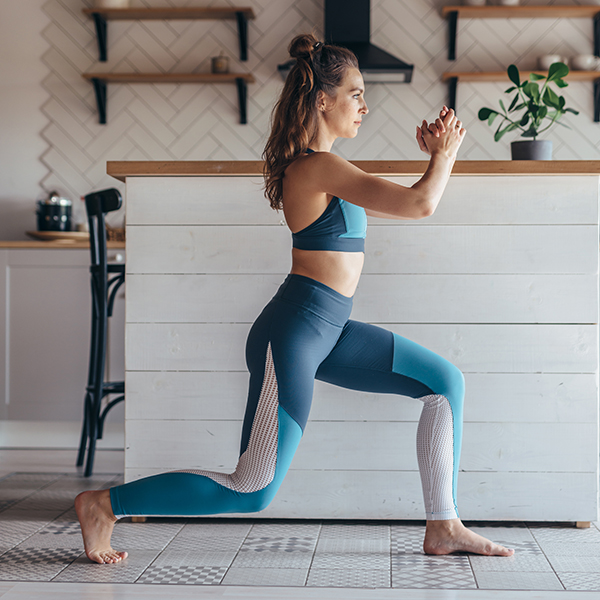
- Stand tall with your feet hip-width apart and your arms at your sides.
- Keeping your chest lifted, shoulders back, core braced, and back flat, take a large step forward with your right foot, lowering your body until your right thigh is parallel to the floor and both knees bend to 90 degrees.
- Hold here for a couple of seconds, as you focus on pressing your hips forward.
- Bring your left foot forward to return to a standing position.
- Lunge forward again, this time with your left foot. Continue alternating legs, performing equal reps on both.
2. Kneeling hip flexor stretch
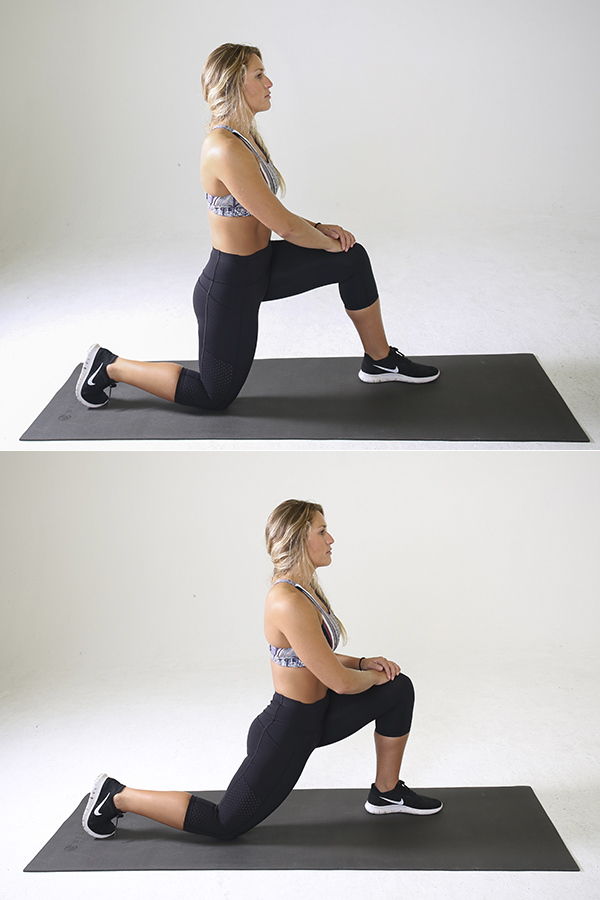
- Assume a half-kneeling position with your left knee on the floor and your right foot flat on the floor in front of you. Keep your right knee bent to about 90 degrees. Place your hands on your right thigh.
- Keeping your back flat, chest lifted, core engaged, and hips square, push your hips forward while pressing down with your left foot.
- Hold for 30 seconds to a minute, switch sides, and repeat.
3. Standing Quad Stretch
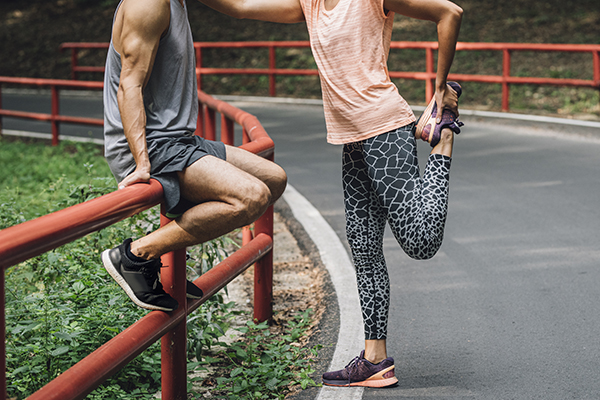
- Stand with your feet hip-width apart, using a chair or wall for balance if necessary.
- Keeping your chest lifted and core braced, bend your right knee and lift your foot behind you, grabbing the top of it with your hand.
- Actively press against your hand to feel the stretch in your thigh and hip flexor.
- Release your leg, and repeat on your other side.
4. Cobra
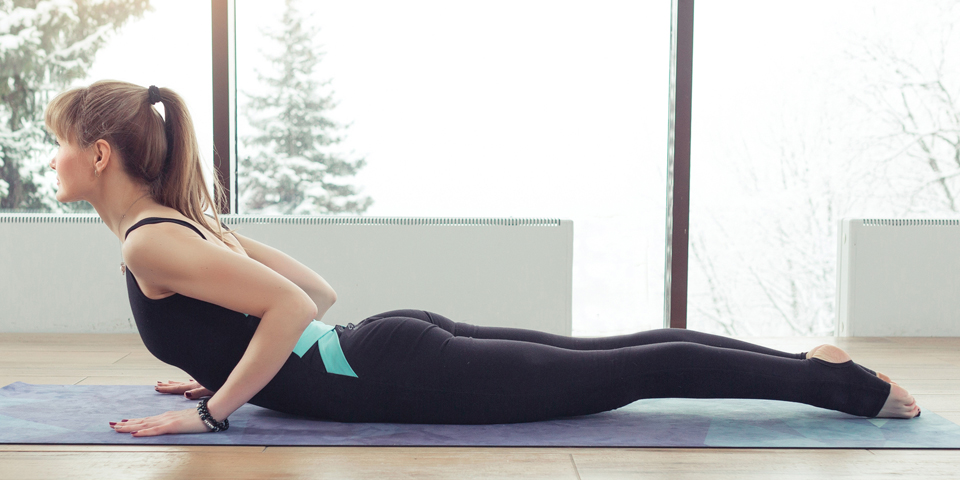
- Starting facedown on a mat, place your hands under your shoulders. Keep your legs straight, and press the tops of your feet into the mat.
- On an inhale, press into your palms and lift your chest off the floor using your arm and back muscles. (Only lift your chest to a height that avoids pinching your lower back.)
- Keep your elbows slightly bent and tucked into your sides. Engage your leg muscles by keeping them straight and pressed into the floor.
- Hold for a few breaths, then return to the starting position.
5. Bridge
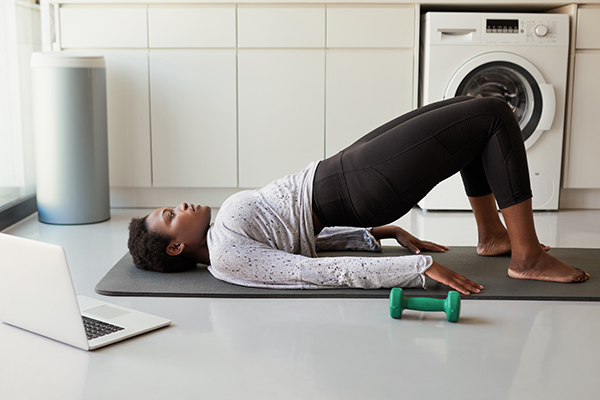
- Lie on your back with your knees bent, your feet flat on the floor, and your arms by your sides, palms facing down.
- Press into your heels and lift your hips until they’re in line with your knees, interlacing your fingers behind your back and rolling your shoulders underneath you.
- To reverse the stretch, undo your hands, and slowly lower yourself to the floor.
6. 90/90 Hip Swivel
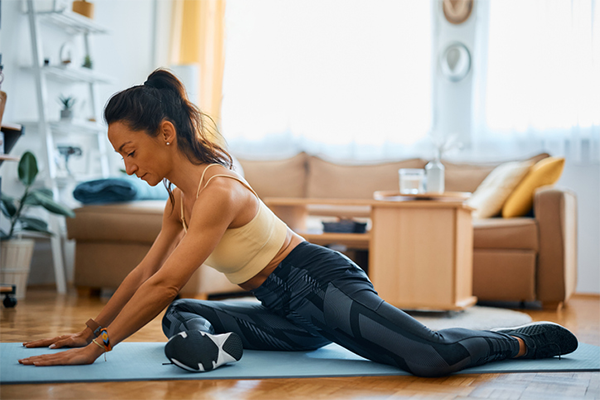
- Sit on the ground with both knees bent 90 degrees. Rotate both hips to the right so your knees and ankles touch the floor. Maintain an upright torso with your hands on the ground slightly behind you.
- Externally rotate your right leg, with your inner thigh facing upward. Keep resting your knee and ankle on the floor.
- Internally rotate your left leg, so your inner thigh faces the ground. As with your other leg, keep resting your knee and ankle on the floor.
- Hold the stretch for a few seconds. Then, keeping your knees bent and feet in place, swivel your hips to the left to repeat the stretch on the other side.
- Hold for 30 seconds to a minute on each side, then repeat.
Create a free Beachbody On Demand account and find out how Beachbody’s at-home workouts, nutrition programs, and online community work together to help you reach your health and fitness goals.

